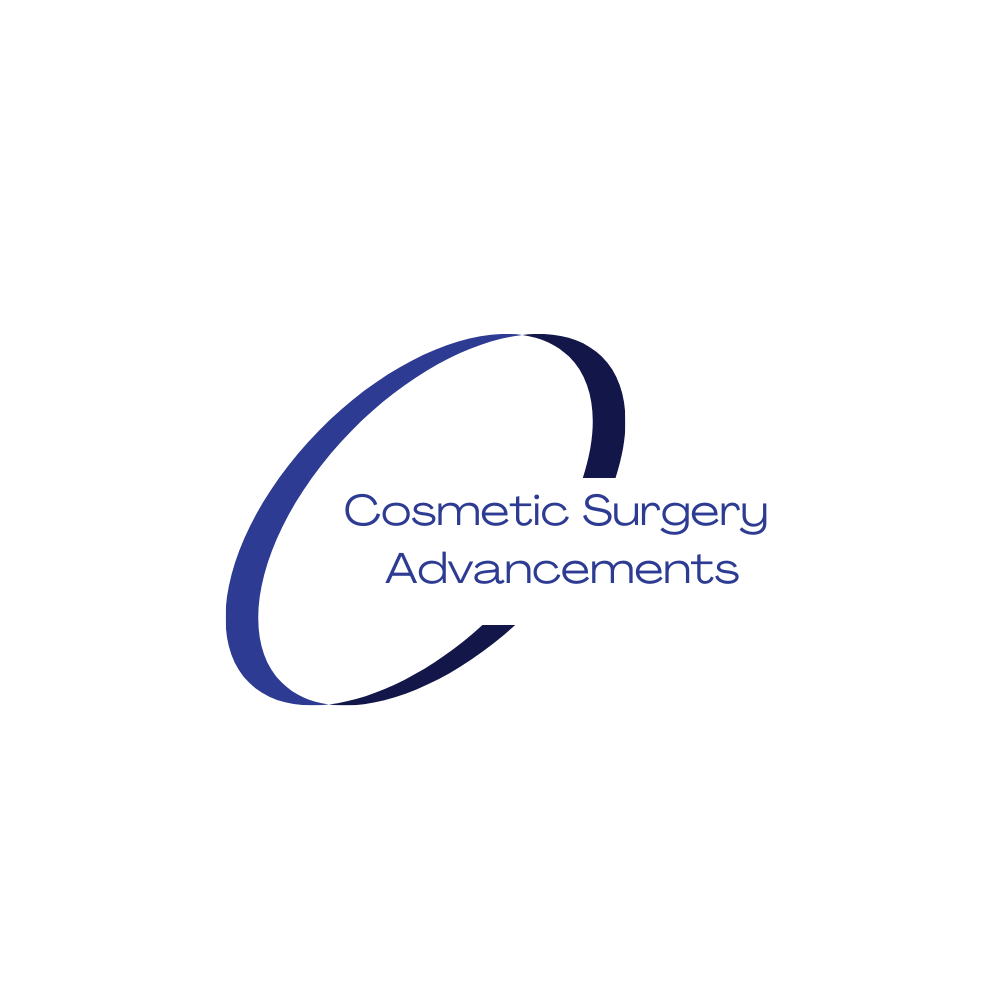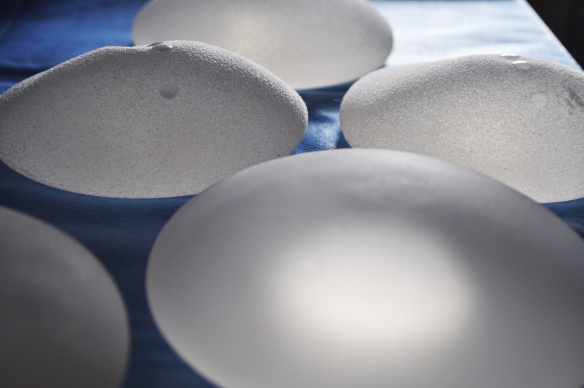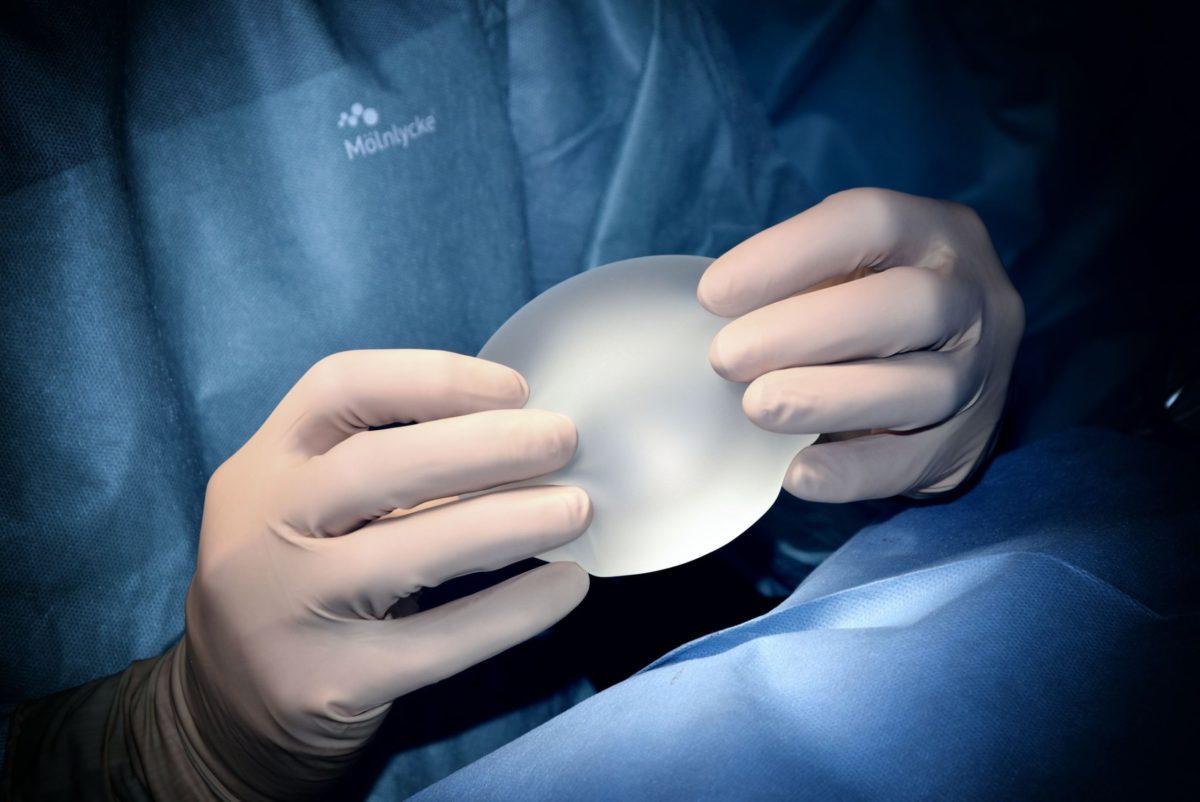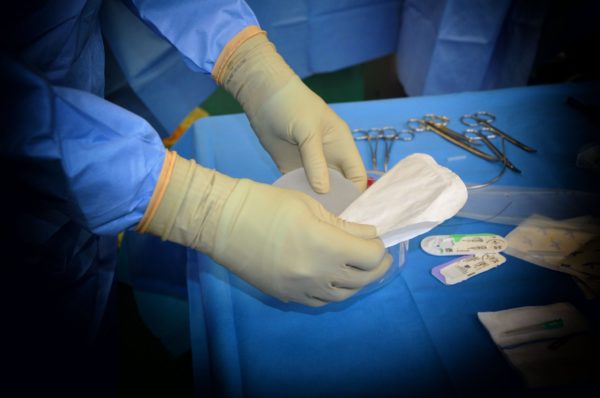Breast implants
Breast Implants (800cc or more) are considered to be Extra large
Breast implants come in various shapes and sizes, with 800cc currently being the largest one, available from all manufacturers. There are a few options if you want to have larger breast implants.
Expandable Implants
Breast implants that contain saline and can be filled too much greater volumes than 800cc.
Saline Implants
Saline implants can be overfilled – this voids any warranty and is not recommended.
Silicone Implants
A silicone implant can be custom made for almost any cc volume.
For information about implant manufacturers More Info.
Having large implants is a decision, that needs careful consideration.
The larger the implant the more it will stretch skin and tissues.
Large saline and silicone-filled implants will also be heavier and feel much firmer.
Risks include increased likelihood of:
- Necrosis, the formation of dying skin cells or tissue around the breast – this can cause implant extrusion.
- Infection.
- Seromas and hematomas.
- Nerve damage.
- Skin becomes thinner and shrinking over time (skin atrophy).
- Implant displacement.
- Capsular contraction.
- Rupture if the implant is overfilled.
Personally, I do not advocate the use of implants that are larger than 800cc because of the additional risks involved. If you do choose to have larger implants then it is highly advisable to locate a consultant that advocates their use and can provide patient testimonials.
For more information about how to check your surgeon is suitably qualified – Qualifications
Placement
Pre-filled larger implants
Pre-filled larger implants are normally placed in the sub-glandular position (over the muscle), due to skin stretching easier than muscle.
Choosing to have more than one procedure to allow the skin to stretch gradually and having implants in the submuscular position (under the muscle) may be beneficial, due to the additional support the muscle will provide. There is also research that shows there is a slightly lower rate of capsular contraction with the submuscular position.
Incision
Pre-filled larger implants
The implants will need larger incisions and the infra-mammary fold incision (crease under the breast) is the one most surgeons will offer.
The infra-mammary fold incision is associated with lower rates of infection, seroma’s and hematoma’s, nerve damage, implant displacement, and capsular contraction.
The other alternative that may be offered is the areola incision. The areola incision (nipple)carries increased risks of infection, seroma’s and hematoma’s, nerve damage, and capsular contraction.
Unfilled, saline implants
The implant maybe inserted through the axillary (underarm) incision. This carries the highest risks of infection, seroma’s and hematoma’s, nerve damage, implant displacement and capsular contraction.
T.U.BA
Transumbilical breast augmentation
This is a method of inserting empty, saline-filled, breast implants through a small incision in the belly button.
Implants-saline
Placement –
Subglandular position (over the muscle) or submuscular position (under the muscle).
To provide a view of the patient’s underlying tissues during this procedure, a tiny fiber-optic camera called an endoscope is used to ensure that the implants are properly positioned.
The surgeon will next create a pocket carefully monitoring the image of the internal breast, to ensure it is the correct size and in the right position.
Implants are then inserted through a track that has been created first by the endoscope. The implant is then filled with saline when it is placed into the pocket and the surgeon is confident of the position. This may allow the surgeon to fill the implants to greater cc volumes as there is no pressure on a scar near the breast and if you opt for placement above the muscle this is likely to accommodate a larger implant.
Opinions are divided among surgeons who perform T.U.BA and surgeons who don’t.
Risks
Some surgeons believe that there may be increased risks of infection, seroma’s and hematoma’s, nerve damage, implant displacement and capsular contraction.
Advantages
Surgeons that perform T.U.B.An advocate the procedure as:
- Less invasive and safer with quicker recovery time, in addition to the benefit of no visible scars as the only incision made, is in the belly button.
- Lower rates of infection, seroma’s and hematoma’s, because the pockets are formed by expansion as the implant is filled with saline, they conform to the shape of the implant.
- This eliminates dead space that could harbor infection or hematoma.
- Lower rates of implant displacement and capsular contraction.
- Monitoring by external appearance the extent, position, and shape of the implant pocket as it is being created allows precise pocket dimensions, facilitates symmetry, assists in correcting moderate tubular-shaped breasts, and helps prevent symmastia.
Drains
You may require drains after a breast augmentation, revision or reconstructive surgery. This is to prevent any delay in healing which may occur if the fluid is not drained.
The drain is a narrow silicone or rubber tube, placed in the pocket created for the implant, during a breast augmentation procedure, to enable fluid that could build up in the pocket to drain away. Drains may be required regardless of the size of the implant used. Due to the creation of a larger raw surface of tissue, it is more likely they will be required with larger implants.
Drains are usually required following a mastectomy or reconstructive breast surgery. You may have only one drain, or you may have five or more if you have a bilateral mastectomy with immediate reconstruction.
The location of your drains will depend on the surgery you have, but often includes a drain at your mastectomy site and one in your armpit, if you have lymph nodes removed.
Drains may also be required during revision procedures needed for complications such as capsular contracture when the breast has become hard, distorted and painful.
Infection
Drains are also used to treat infections. The drain helps to eliminate any significant accumulation of fluid around the breast implant which may also reduce the occurrence of a second infection.
Drain Bulb
The drain is accessible externally through a very small incision and the end of the drain is connected to a small collection bulb. The bulb can be emptied and the contents measured at any given time. When the fluid coming out has decreased to a minimum, the drain tube will be removed.
Pain
Drains may increase post-surgery discomfort and pain, this normally subsides when the drain is removed. As mentioned earlier, drains are not normally used for most breast augmentation procedures.
Emptying and monitoring drainage
Your nurse will show you how to periodically drain your bulbs and you will need to keep a record of the amount of fluid each time you empty them. This is important as it will guide your consultant regarding when it is safe to remove the drains.
Always wash your hands before and after each measurement. To start with you will usually have around 100 cc drainage per day and it should be bright red, this should change to a straw colour after a few days and the amount of fluid should steadily decrease. You may need to empty your drains two to four times daily, or whenever they become approximately half full. After emptying your bulb, rinse it with water and gently compress it to make sure a vacuum is recreated when you close the system.
If you notice an increase in the amount of fluid, consider your activities during the day, it may be a sign that you need to take it easy for a few more days.
Looking after your drains
Drains provide bacteria access to the body and you must keep the area around your drains clean and dry by washing with soap and water and gently patting dry the area after.
How to Prevent Surgical Infections
Consider wearing an appropriate drain management garment with pockets or pouches where you can insert the bulbs to keep them secure,
This keeps the drains secure and reduces the risk of the drains pulling on your wound site or possibly getting tangled with things.
Signs and Symptoms of Infection
Having drains provides bacteria with an access route to your body. The risk of infection begins to increase rapidly after the drains have been in place for 21 days.
Signs of a drain-related infection may include:
- A fever with a temperature of 101 degrees F (38.3 C) or higher.
- Redness of your skin surrounding the drain.
- Hardness or firmness where the drain exits your body.
- Thickening rather than thinning of the drained liquid.
Foul-smelling drainage or pus at the entry site. - Pain or discomfort at your drain sites.
- A sudden change in the smell or colour of the drainage.
Common Drain Problems include:
Clots in the tubing
If this occurs, try gently kneading the area.
Loss of vacuum pressure
If a proper vacuum isn’t created after emptying your bulb, your drain may fail to remove the fluid. This will cause a build-up up of fluid, seek advice if you are experiencing a higher level of discomfort than previously.
Drain site infections
Drain site infections are not uncommon and are more likely the longer your drains are in place.
When to Call Your Consultant
You should call your surgeon if you have any concerns or questions at all, or you develop any of the following problems:
- Your drainage is bright red for more than two or three days.
- You show any signs or symptoms of an infection as noted above.
- If a large amount of fluid is leaking from where the drain tubing is inserted into the surgical site.
- Your drainage output suddenly decreases or stops abruptly.
- If your drainage becomes thicker rather than thinner as time goes on.
- Your bulb loses suction.
- If your drain falls out.
Removal
Normally drains used during a breast augmentation surgery will be removed the day after the procedure. If you have stayed overnight in a hospital this will be done before you leave. If you have had your procedure as an outpatient you would go back to the hospital or consultant’s rooms.
On occasion, it may be necessary for the drains to stay in for longer although for a straightforward breast augmentation it is unlikely they will remain in for longer than 48 hours after your procedure.
Drains placed in patients following a mastectomy and reconstruction with implants will normally remain in place for two to three weeks, however, they may need to be left in place for longer than three weeks.
Your consultant will remove your drains by cutting the suture holding them in place and gently pulling out the tubing. This may cause some discomfort, however, this will normally only last a few minutes. Most people do not need any pain medications for this procedure.
You will have small scars where the tubing exited your skin, but these often fade over time.
Expandable Implants
Expandable implants provide an alternative way to have large implants, without the need to have more than one procedure, as the cc volume can be increased over time.
Implant
An expandable implant has an outer chamber of silicone gel and an inflatable hollow inner chamber with a valve (port). Saline is then injected through the valve into the hollow saline chamber to expand it.
Placement –
subglandular position (over the muscle) and submuscular position (under the muscle).
Implants are normally placed sub muscularly through a transaxillary incision with the filling port positioned a few centimetres below the incision and permanently retained. If you have adequate soft tissue to cover the implants you may be able to have them in the subglandular position (over the muscle). However, it is likely your consultant will advise you to have them placed in the submuscular position (under the muscle). This is to prevent visible rippling and implant edges being noticeable as the implant is expanded.
Procedure
The implants are positioned and then overexpanded, usually starting 2 weeks after implantation.
If are having reconstructive surgery using expandable implants it is likely you will have appointments every 1–2 weeks when additional saline will be injected into the expandable implant through a valve just under the skin of your underarm. This only takes a few minutes. You may feel some aching or tightness in the breast area for a day or two after each injection, but it should not be painful. This process continues over several weeks.
If you are choosing to have expandable breast implants for breast augmentation than you may not have the additional saline-injected as often. Your consultant will discuss this with you as it will depend on your desired outcome and your muscle, skin and soft tissues.
Risks include increased likelihood of:
- Infection.
- Necrosis, the formation of dying skin cells or tissue around the breast – this can cause implant extrusion.
- Seroma and hematomas.
- Nerve damage.
- Skin becomes thinner and shrinking over time (skin atrophy).
- Implant displacement.
- Capsular contraction.
- Rupture if the implant is overfilled.
The Internal Bra
The utilization of the internal bra technique for additional support, when larger implants are desired is advocated by some surgeons. Various materials have been introduced for this application.
Advantages
Lower occurrence of bottoming out, double bubble, rippling and implant extrusion.
Risks
Potential for seromas; Need for long-term drains; Redbreast syndrome; Limited sizes
Open weave in SERI Scaffold, P4HB mesh may facilitate fluid egress and mesh integration.
Limited clinical data for breast surgery.
Fat transfer
Most surgeons that offer fat transfer as an alternative to implants agree that it is not possible to go up more than 2 cup sizes. To achieve an increase of more than 2 cup sizes you will almost certainly need implants.
However, larger implants may cause ripples on the surface of your breast which can be effectively concealed by using fat to cover the implant.
For more information about breast augmentation – Breast Augmentation
Questions
- How many implants over 800cc have you placed in the last 12 months?
- What is the largest prefilled implant you have placed?
- What is your preferred incision and placement for large implants?
- Will you use drains?
- Do you use the internal bra and which method do you use?
- How many implants have you placed with the internal bra in the past 12 months?
- Have you used expandable implants before and how many times?
- What is the highest cc volume you have filled an expandable implant?
- Have any of your patients needed to have their implants removed due to complications after the procedure?
- How many of your patients have needed revision surgery for capsular contraction in the past 12 months?
- How many of your patients have had any other complications after surgery?
What did you do to rectify them?
For more information about revision surgery Revision surgery
Implant Terminology
Anterior Projection
The maximum height of the implant when placed with its base on a flat horizontal surface. For inflatable and adjustable implants, this applies to the implant’s nominal volume.
Base Dimension
The length of the major axis and the length of the minor axis when the implant is placed with its base on a flat horizontal surface. For inflatable and adjustable implants, this applies to the implant’s nominal volume.
CC Volume
The volume of filler in a prefilled implant.
Filling Volume
The volume of the material contained within the shell or volume of the solution necessary to fill an expandable or adjustable mammary implant.
Orientation Means
A mark in or on the implant to assist the surgeon in positioning the implant.
Shell
Envelope of the implant
Seam
The seal junction of implant materials fused or adhered together.
Injection Site
A component designed to be penetrated by a needle to alter the volume of the implant.
Valve
shell component allowing inflation of mammary implant with variable volumes of liquids and providing a secure closure with the rest of the time.
My Breast Augmentation Journey
I knew I wanted to have breast implants when I was 15 and first saw a poster of Pamela Anderson on my boyfriend’s wall. When I was 17 I had my first consultation and was advised I should wait till I was 20 as I may develop more breast tissue.
I spent the next 3 years researching breast augmentation, implants and surgeons and 3 months before my 21st birthday I found Mr. Douglas McGeorge. He was recommended by a friend’s mum, who was a theatre nurse and had friends who had worked with him. I had seen a few of his breast augmentations and loved the natural look. At the time most breast augmentations I had seen, were with high profile implants which looked very round and fake.
When I had my first consultation I knew I wanted him to perform my first breast augmentation. We discussed my goals and decided a 280cc low profile, silicone, McGhan implant, would give me a natural shape and take me up approx 2 cup sizes. I knew as soon as all my dressings came off that they were not as big as I wanted them. I gave them time to settle and after approximately 9 months started to notice they seemed to feel a little firmer.
I went back to Douglas who advised I had stage one capsular contraction. I know I should have been upset but it was a relief as he agreed to change my implants and I only had to pay a small hospital fee and the cost of the new implants. After hours of talking about expandable implants, which Douglas did not want to use, I agreed to have 395cc, a medium profile, Allergan anatomical implants. After the procedure I was doubtful they were big enough but I knew they needed time to settle.
Approximately 3 months after I loved the shape and my cleavage but I still was not happy with the size. When I called Douglas he advised that if I wanted to go any larger my only option would be a high profile implant which would give me a very round and fake shape. I knew that was not what I wanted so decided to stick with my implants but asked him to call me if any new implants came onto the market that would give me larger breasts that still had a natural shape. He mentioned Allergan was working on a high profile anatomical implant with him and he would contact me when it was available.
Approximately 9 months later I got a call from Douglas to tell me the new Allergan, high profile, an anatomical implant was available. He advised with my base diameter the largest cc volume I could have would be 535cc and I agreed to go ahead. Now over 15 years since my procedure I am very happy with my breast shape and size. My Allergen implants have now been recalled and I am keeping them to find out why and for information from the 1st World Consensus Conference on BIA-ALCL and Latest Statistics BIA-ALCL
I am also very glad I did not opt to have expandable implants; which I would undoubtedly now deeply regret. At the time I was very lucky to have a surgeon who cared enough to give up a great deal of his time and help me make the right decisions. If you are considering having large implants please also consider the surgery you may need in the future. Even if you are not wanting your breasts to look natural, can you accept that there is a possibility that it will be very difficult to have them replaced with smaller implants at a later date. There is also a high likelihood you will need an uplift which is likely to leave visible scars if you do ever want them exchanged for smaller implants.




